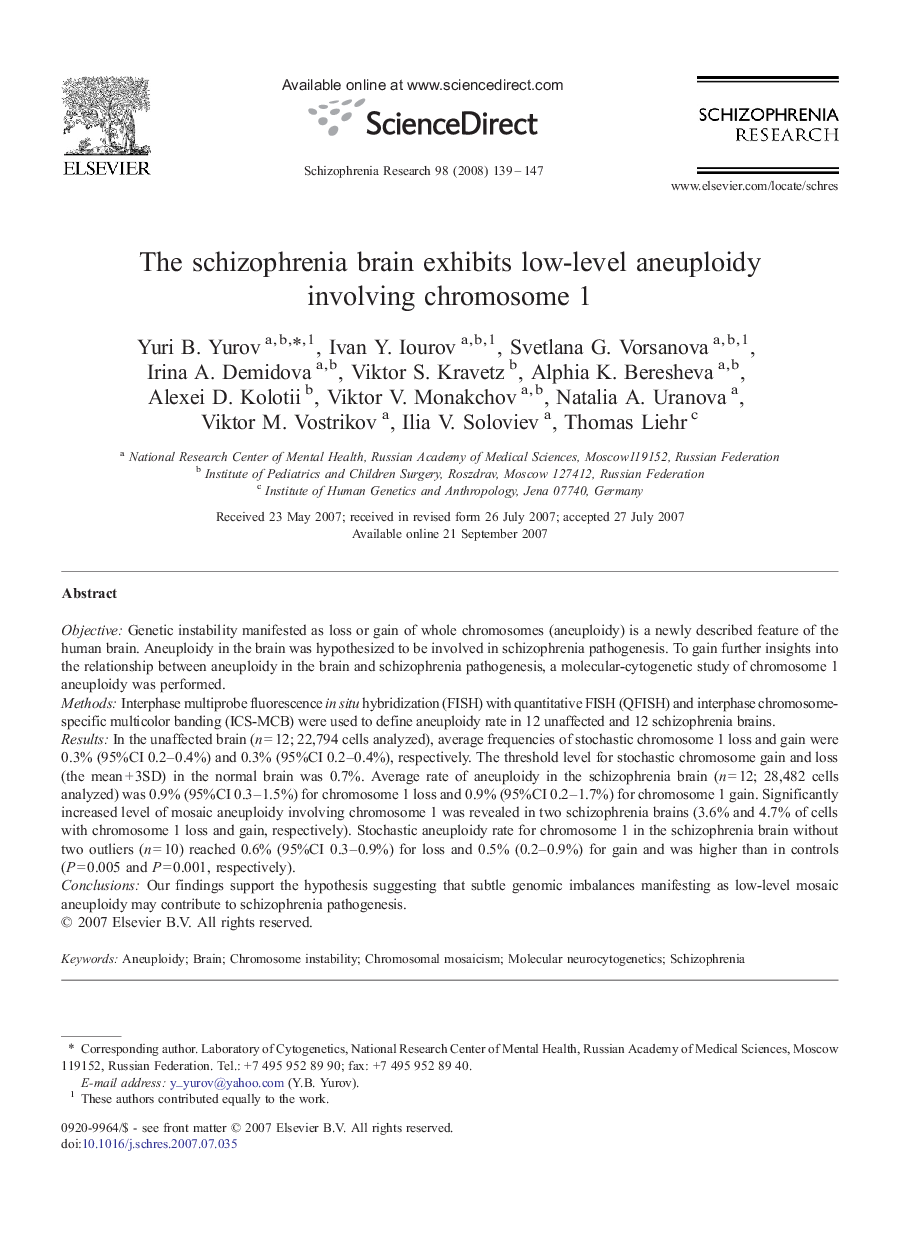| Article ID | Journal | Published Year | Pages | File Type |
|---|---|---|---|---|
| 340033 | Schizophrenia Research | 2008 | 9 Pages |
ObjectiveGenetic instability manifested as loss or gain of whole chromosomes (aneuploidy) is a newly described feature of the human brain. Aneuploidy in the brain was hypothesized to be involved in schizophrenia pathogenesis. To gain further insights into the relationship between aneuploidy in the brain and schizophrenia pathogenesis, a molecular-cytogenetic study of chromosome 1 aneuploidy was performed.MethodsInterphase multiprobe fluorescence in situ hybridization (FISH) with quantitative FISH (QFISH) and interphase chromosome-specific multicolor banding (ICS-MCB) were used to define aneuploidy rate in 12 unaffected and 12 schizophrenia brains.ResultsIn the unaffected brain (n = 12; 22,794 cells analyzed), average frequencies of stochastic chromosome 1 loss and gain were 0.3% (95%CI 0.2–0.4%) and 0.3% (95%CI 0.2–0.4%), respectively. The threshold level for stochastic chromosome gain and loss (the mean + 3SD) in the normal brain was 0.7%. Average rate of aneuploidy in the schizophrenia brain (n = 12; 28,482 cells analyzed) was 0.9% (95%CI 0.3–1.5%) for chromosome 1 loss and 0.9% (95%CI 0.2–1.7%) for chromosome 1 gain. Significantly increased level of mosaic aneuploidy involving chromosome 1 was revealed in two schizophrenia brains (3.6% and 4.7% of cells with chromosome 1 loss and gain, respectively). Stochastic aneuploidy rate for chromosome 1 in the schizophrenia brain without two outliers (n = 10) reached 0.6% (95%CI 0.3–0.9%) for loss and 0.5% (0.2–0.9%) for gain and was higher than in controls (P = 0.005 and P = 0.001, respectively).ConclusionsOur findings support the hypothesis suggesting that subtle genomic imbalances manifesting as low-level mosaic aneuploidy may contribute to schizophrenia pathogenesis.
